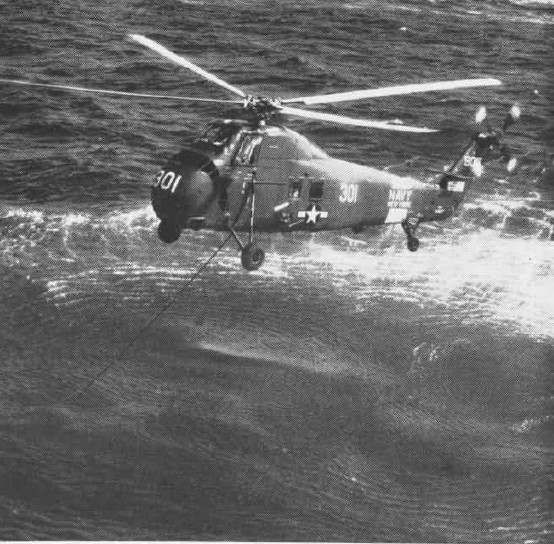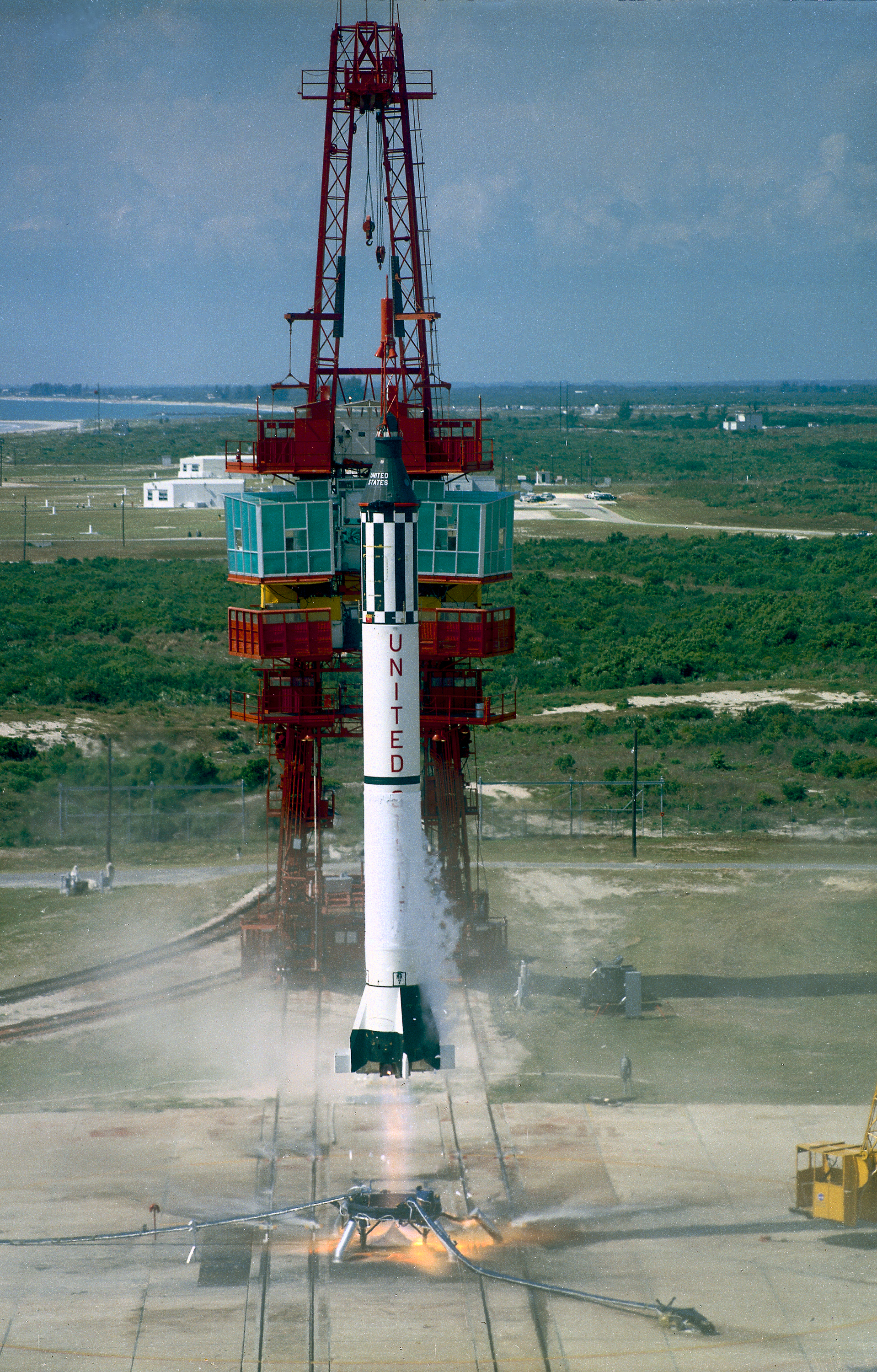|
301st Air Rescue Squadron
The 301st Rescue Squadron is an Air Force Reserve Command unit, part of the 920th Rescue Wing at Patrick Space Force Base, Florida. The squadron operates the HH-60G Pave Hawk helicopter, conducting both peacetime and combat search and rescue missions. As a reserve unit, it is operationally-gained by the Air Combat Command (ACC). Mission History The 301st was originally activated in August 1956 at Miami International Airport, Florida as an amphibious aircraft unit, equipped with the SA-16 (later HU-16) Albatross and began training for combat search and rescue missions. The 301st performed search and rescue and medical evacuation missions primarily over land areas and in the Atlantic and Caribbean waters off Florida. It was the first of five rescue squadrons established by Continental Air Command in the Air Force Reserve in the 1950s. In January 1957, the squadron performed the first rescue by a reserve unit. In 1960, the Air Force moved its Air Force Reserve units from ... [...More Info...] [...Related Items...] OR: [Wikipedia] [Google] [Baidu] |
Air Force Reserve Command
The Air Force Reserve Command (AFRC) is a major command (MAJCOM) of the United States Air Force, with its headquarters at Robins Air Force Base, Georgia. It is the federal Air Reserve Component (ARC) of the U.S. Air Force, consisting of commissioned officers and enlisted airmen. AFRC also plays an integral role in the day-to-day Air Force mission and is not strictly a force held in reserve for possible war or contingency operations. AFRC also supports the United States Space Force through the 310th Space Wing, pending the creation of a space reserve component. Overview The federal reserve component of the United States Air Force, AFRC has approximately 450 aircraft assigned for which it has sole control, as well as access to several hundred additional active duty USAF aircraft via AFRC "Associate" wings that are collocated with active duty Air Force wings, sharing access to those same active duty Air Force aircraft. The inventory, both AFRC-controlled and active duty Regular A ... [...More Info...] [...Related Items...] OR: [Wikipedia] [Google] [Baidu] |
Medical Evacuation
Medical evacuation, often shortened to medevac or medivac, is the timely and efficient movement and en route care provided by medical personnel to wounded being evacuated from a battlefield, to injured patients being evacuated from the scene of an accident to receiving medical facilities, or to patients at a rural hospital requiring urgent care at a better-equipped facility using medically equipped air ambulances, especially helicopters. Examples include civilian EMS vehicles, civilian aeromedical helicopter services, and military air ambulances. This term also covers the transfer of patients from the battlefield to a treatment facility or from one treatment facility to another by medical personnel, such as from a local hospital to a trauma center. History The first medical transport by air was recorded in Serbia in the autumn of 1915 during First World War. One of the ill soldiers in that first medical transport was Milan Rastislav Štefánik, a Slovak pilot-volunteer who was ... [...More Info...] [...Related Items...] OR: [Wikipedia] [Google] [Baidu] |
Sikorsky HH-3 Jolly Green Giant
The Sikorsky SH-3 Sea King (company designation S-61) is an American twin-engined anti-submarine warfare (ASW) helicopter designed and built by Sikorsky Aircraft. A landmark design, it was one of the first ASW rotorcraft to use turboshaft engines. The Sea King has its origins in efforts by the United States Navy to counter the growing threat of Soviet Union, Soviet submarines during the 1950s. Accordingly, the helicopter was specifically developed to deliver a capable ASW platform; in particular, it combined the roles of ''hunter'' and ''killer'', which had previously been carried out by two separate helicopters. The Sea King was initially designated ''HSS-2'', which was intended to imply a level of commonality to the earlier Sikorsky H-34, ''HSS-1''; it was subsequently redesignated as the ''SH-3A'' during the early 1960s. Introduced to service in 1961, it was operated by the United States Navy as a key ASW and utility asset for several decades prior to being replaced by the n ... [...More Info...] [...Related Items...] OR: [Wikipedia] [Google] [Baidu] |
Biscayne Bay
Biscayne Bay () is a lagoon with characteristics of an estuary located on the Atlantic coast of South Florida. The northern end of the lagoon is surrounded by the densely developed heart of the Miami metropolitan area while the southern end is largely undeveloped with a large portion of the lagoon included in Biscayne National Park. The part of the lagoon that is traditionally called "Biscayne Bay" is approximately long and up to wide, with a surface area of . Various definitions may include Dumfoundling Bay, Card Sound, and Barnes Sound in a larger "Biscayne Bay", which is long with a surface area of about . Etymology Hernando de Escalante Fontaneda related in the 16th century that a sailor from the Bay of Biscay called the ''Viscayno'' or ''Biscayno'' had lived on the lower east coast of Florida for a while after being shipwrecked, and a 17th-century map shows a ''Cayo de Biscainhos'', the probable origin of the name for Key Biscayne. The lagoon was known as "Key Biscayne B ... [...More Info...] [...Related Items...] OR: [Wikipedia] [Google] [Baidu] |
Bell HH-1 Huey
The Bell UH-1 Iroquois (nicknamed "Huey") is a utility military helicopter designed and produced by the American aerospace company Bell Helicopter. It is the first member of the prolific Huey family, as well as the first turbine-powered helicopter in service with the United States military. Development of the Iroquois started in the early 1950s, a major impetus being a requirement issued by the United States Army for a new medical evacuation and utility helicopter. The Bell 204, first flown on 20 October 1956, was warmly received, particularly for the performance of its single turboshaft engine over piston engine-powered counterparts. An initial production contract for 100 ''HU-1A''s was issued in March 1960. In response to criticisms over the rotorcraft's power, Bell quickly developed multiple models furnished with more powerful engines; in comparison to the prototype's Lycoming YT53-L-1 (LTC1B-1) engine, producing 700 shp (520 kW), by 1966, the Lycoming T53-L-13, ... [...More Info...] [...Related Items...] OR: [Wikipedia] [Google] [Baidu] |
Sikorsky SH-34J Seabat
The Sikorsky H-34 "Choctaw" (company designation S-58) is an American piston-engined military helicopter originally designed by Sikorsky as an anti-submarine warfare (ASW) aircraft for the United States Navy. It has seen extended use when adapted to turbine power by the British licensee as the Westland Wessex and Sikorsky as the later S-58T. H-34s served, mostly as medium transports, on every continent with the armed forces of 25 countries. It saw combat in Algeria, the Dominican Republic, Nicaragua, and throughout Southeast Asia. Other uses included saving flood victims, recovering astronauts, fighting fires, and carrying presidents. It was the last piston-engined helicopter to be operated by the United States Marine Corps, having been replaced by turbine-powered types such as the UH-1 Huey and CH-46 Sea Knight. A total of 2,108 H-34s were manufactured between 1953 and 1970. Development The Sikorsky S-58 was developed as a lengthened and more powerful version of the Si ... [...More Info...] [...Related Items...] OR: [Wikipedia] [Google] [Baidu] |
Helicopter
A helicopter is a type of rotorcraft in which lift and thrust are supplied by horizontally spinning rotors. This allows the helicopter to take off and land vertically, to hover, and to fly forward, backward and laterally. These attributes allow helicopters to be used in congested or isolated areas where fixed-wing aircraft and many forms of STOL (Short TakeOff and Landing) or STOVL (Short TakeOff and Vertical Landing) aircraft cannot perform without a runway. In 1942, the Sikorsky R-4 became the first helicopter to reach full-scale production.Munson 1968.Hirschberg, Michael J. and David K. Dailey"Sikorsky". ''US and Russian Helicopter Development in the 20th Century'', American Helicopter Society, International. 7 July 2000. Although most earlier designs used more than one main rotor, the configuration of a single main rotor accompanied by a vertical anti-torque tail rotor (i.e. unicopter, not to be confused with the single-blade monocopter) has become the most comm ... [...More Info...] [...Related Items...] OR: [Wikipedia] [Google] [Baidu] |
Bell HH-1H 02469 301 ARRS Home 16
A bell is a directly struck idiophone percussion instrument. Most bells have the shape of a hollow cup that when struck vibrates in a single strong strike tone, with its sides forming an efficient resonator. The strike may be made by an internal "clapper" or "uvula", an external hammer, or—in small bells—by a small loose sphere enclosed within the body of the bell ( jingle bell). Bells are usually cast from bell metal (a type of bronze) for its resonant properties, but can also be made from other hard materials. This depends on the function. Some small bells such as ornamental bells or cowbells can be made from cast or pressed metal, glass or ceramic, but large bells such as a church, clock and tower bells are normally cast from bell metal. Bells intended to be heard over a wide area can range from a single bell hung in a turret or bell-gable, to a musical ensemble such as an English ring of bells, a carillon or a Russian zvon which are tuned to a common scale and insta ... [...More Info...] [...Related Items...] OR: [Wikipedia] [Google] [Baidu] |
Freedom 7
Mercury-Redstone 3, or ''Freedom 7'', was the first United States human spaceflight, on May 5, 1961, piloted by astronaut Alan Shepard. It was the first crewed flight of Project Mercury. The project had the ultimate objective of putting an astronaut into orbit around the Earth and returning him safely. Shepard's mission was a 15-minute suborbital flight with the primary objective of demonstrating his ability to withstand the high g-forces of launch and atmospheric re-entry. Shepard named his space capsule ''Freedom 7'', setting a precedent for the remaining six Mercury astronauts naming their spacecraft. The number 7 was included in all the crewed Mercury spacecraft names to honor NASA's first group of seven astronauts. His spacecraft reached an altitude of 101.2 nautical miles (116.5 statute miles, 187.5 km) and traveled a downrange distance of 263.1 nautical miles (302.8 statute miles, 487.3 km). It was the fourth Mercury flight launched with the Mercury-Redstone La ... [...More Info...] [...Related Items...] OR: [Wikipedia] [Google] [Baidu] |
Cape Canaveral Air Force Station
Cape Canaveral Space Force Station (CCSFS) is an installation of the United States Space Force's Space Launch Delta 45, located on Cape Canaveral in Brevard County, Florida. Headquartered at the nearby Patrick Space Force Base, the station is the primary launch site for the Space Force's Eastern RangeCAST 1999, p. 1-12. with three launch pads currently active (Space Launch Complexes 37B, 40, and 41). The facility is south-southeast of NASA's Kennedy Space Center on adjacent Merritt Island, with the two linked by bridges and causeways. The Cape Canaveral Space Force Station Skid Strip provides a runway close to the launch complexes for military airlift aircraft delivering heavy and outsized payloads to the Cape. A number of American space exploration pioneers were launched from CCSFS, including the first U.S. Earth satellite (1958), first U.S. astronaut (1961), first U.S. astronaut in orbit (1962), first two-man U.S. spacecraft (1965), first U.S. unmanned lunar lan ... [...More Info...] [...Related Items...] OR: [Wikipedia] [Google] [Baidu] |
Project Mercury
Project Mercury was the first human spaceflight program of the United States, running from 1958 through 1963. An early highlight of the Space Race, its goal was to put a man into Earth orbit and return him safely, ideally before the Soviet Union. Taken over from the US Air Force by the newly created civilian space agency NASA, it conducted 20 uncrewed developmental flights (some using animals), and six successful flights by astronauts. The program, which took its name from Roman mythology, cost $ (adjusted for inflation). The astronauts were collectively known as the "Mercury Seven", and each spacecraft was given a name ending with a "7" by its pilot. The Space Race began with the 1957 launch of the Soviet satellite Sputnik 1. This came as a shock to the American public, and led to the creation of NASA to expedite existing US space exploration efforts, and place most of them under civilian control. After the successful launch of the Explorer 1 satellite in 1958, crewed spacef ... [...More Info...] [...Related Items...] OR: [Wikipedia] [Google] [Baidu] |


.jpg)








